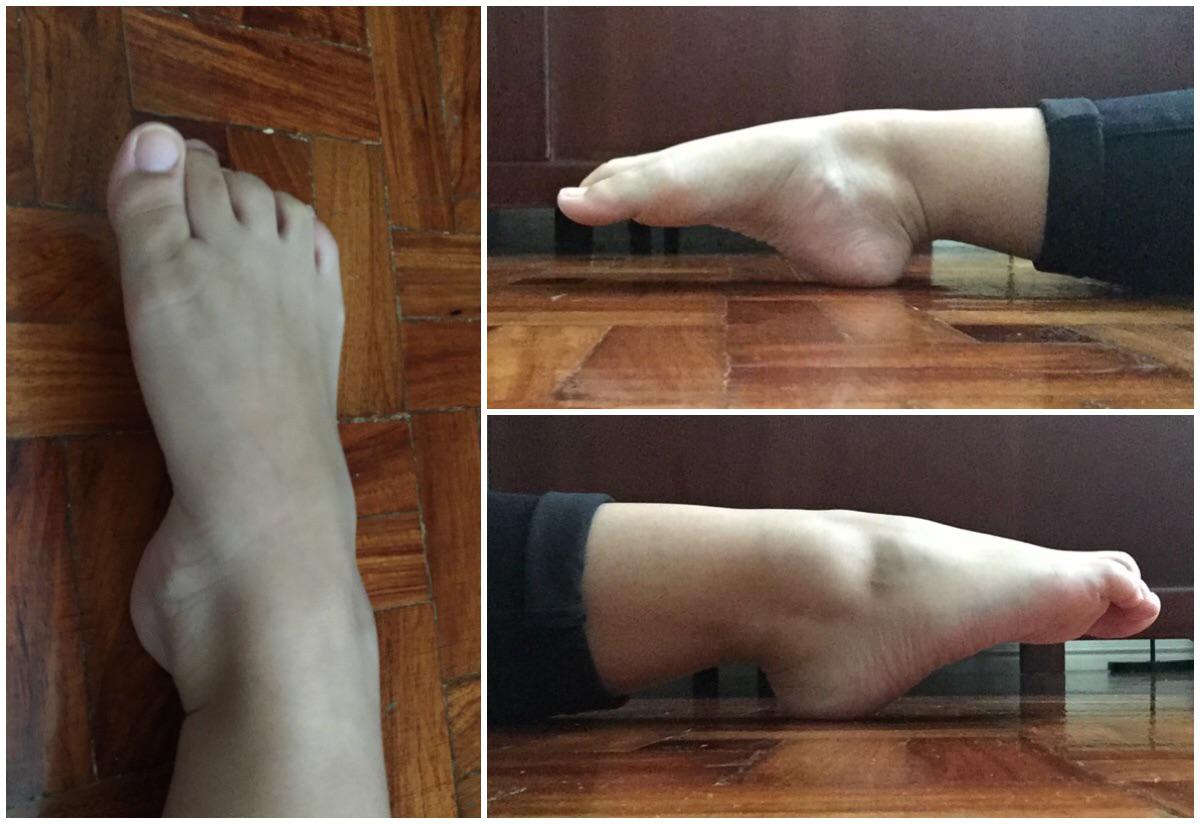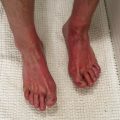What Is Sickled Feet?
Sickled Feet is not a medical condition but a behavior that describes how a dancer positions their feet in a pointed position which makes them more vulnerable to foot and ankle injuries.
When dancers are in any dance movement, they need to have their toes in a pointed position. A dancer who is sickling will have their toes pointed inward, which causes their heel to drop. Instead of being up on your toes high enough so that the heel is slightly forward and the toes behind the ankle bone, a sickle foot is essentially flattered or not in line with your leg correctly.
A dancer who does not get in the correct pointed position could potentially suffer from an injury. Sickling can lead to weak ankles, tendonitis, or sprains. As a trainer, it’s vital to correct a dancer when their feet are not positioned correctly.
Sickling can lead to weakness in ankle tendons and chronic ankle instability, making them more vulnerable to injuries like tendonitis, sprains, and fractures.
How do Sickling feet happen?
To sickle your foot is to turn it inwards. For example, if you take your right foot and turn the ankle towards your left foot (instead of turning it to the right side), you sickle! This way, not only do you stretch incorrect muscles of the foot but you “break” the so-called line as well. And unfortunately -or not- while dancing, these infinitesimal movements have a huge aesthetic effect.
To better understand the distinction of the motions of the foot, if you pointe your right ankle as straight as you can, this is pointing, and if you pointe it but also turn it towards the right side as much as you can, this is pronating- and it does look gorgeous!
The ankle joint has a naturally larger range of motion inwards (35 degrees) than outwards (25 degrees), so when pointing, dancers with usually untrained ankles use to sickle. This also makes your heel drop behind your leg and can even lead to injuries. If you sickle and you are on pointe or relevé, you will be so unstable that you could sprain your ankle too. Aesthetically, the pure, straight, and stable line will break, as one very significant “visual” (which is to keep the heels forward) will not happen.
Generally, dancers have to train for a long time (quite a few years) to build up strength in their feet, work the foot muscles properly, and develop the correct technique. When the footwork is secure and strong, a dancer can start to go up on pointe with the assistance of pointe shoes, which have a reinforced toe (you can look up on YouTube how pointe shoes are made.)
A ballet teacher will usually introduce a student to pointe work by doing some simple exercises to get them used to the feel, often doing the pointe work as a separate section during the class. Gradually a student will acquire strength and capability until they are so used to being on pointe that it feels like second nature.
The shoes have a rigid sole (which dancers then quickly aim to ‘break in’) and the strong sole gives support to the foot. There is not so much weight coming down on the tips of the toes, but the toes are supported by the shoe from about the base of the toe joint down (i.e. from the hallux). There are some dancers who might be able to dance a bit without pointe shoes but it is seriously not advisable as it puts too much pressure on the toe/foot joints and could lead to injury and broken toes etc.
Pointe shoes used to be extremely painful and cause terrible blisters, bunions, and callouses, and dancers used to end up with horrible-looking feet. Nowadays there are ways of making the pointe shoes more comfortable.
Why Do Dancers Sickle Their Feet?
Sickling your feet is a common mistake dancers make, especially young or new dancers. Someone beginning dance typically has not developed an awareness of positioning or orienteering their feet, called proprioception. It’s like having muscle memory. Once your muscle memory has developed, you’re more apt to feel when the foot is not positioned correctly. As a new dancer, it is essential to be appropriately trained to develop an awareness of proper foot, knee, ankle, and hip alignment. This training will help prevent injury.
Another reason that a dancer may sickle their feet is due to having stiff feet or feet that naturally sickle. If you’re a dancer who is unfortunate to have one of these situations, you may want to visit a physical therapist, dance medicine specialist, or work with a qualified trainer to assist you with correcting the formation. Sometimes you may even have to get personalized training to rectify the sickling before weak ankles develop.
A beginner dancer should not be deterred if they are having trouble finding the correct position. Expert dancers can also struggle with sickling their feet, especially when they’re pointing their feet hard. It’s natural for your feet to want to point inward. If an expert dancer loses focus or isn’t thinking about their placement, they may sickle their feet.
How To Correct and Prevent Sickled Feet
You can practice pointing your feet correctly in a sitting position. First, you will want to point your feet to be positioned in a straight line out from your calf muscle. Next, move your foot a half-inch to the outside. Now imagine a line going from your ankle down. Your big toe should be in line with this. When moving your big toe out, if your point is lost, go back to aligning your foot with your calf.
You can check for sickling in your foot by drawing an “X” on the front of your ankle and again at the base of your 2nd toe (as pictured), then draw a line to connect the two. Next, watch your foot as you tendu and as you relevé, in parallel, and in turned out. A strong ankle will consistently produce a vertical line in the foot. In a sickled foot, the line will veer outward and indicates that more strength is needed. I recommend watching your feet like this through an entire class. Your line may be very different at the beginning of class versus the end of class, or in adagio versus allegro.
Master these 3 exercises to fix sickling:
Ankle Eversion: Sitting on the ground with your legs straight out in front of you, loop a resistance band under your forefoot on one side and hold the band in place with the other foot. Roll your working ankle all the way up and out against resistance, and relax slowly down and in. Focus on achieving full range of motion and using only the ankle. Keep your knee straight and facing the ceiling to make sure you are not rotating at the hip. Repeat 10-20 reps, 3 sets on each side, daily.
Pointe with Pull: While still sitting on the ground with your legs straight out in front of you and a resistance band looped under the forefoot, pointe and flex your working foot while the resistance band tries to pull your foot into a sickled position. You will have to recruit your “stirrup” muscles to consistently hold your foot in a neutral line, avoiding both sickling and winging. Make sure and work through your entire range of motion of the ankle. Repeat 20 reps, 3 sets on each side, daily.
Ball Squeeze Relevé: Standing in parallel, place a small inflated ball or a Pilates ball between your ankles. Lightly press into the ball with your ankles as you relevé slowly up and down, watching your feet to maintain a vertical line to the floor. Focus on pushing your weight through the 2nd toe into the floor. Repeat 20 reps, 2-3 sets, daily.
It’s important to train your muscles in the manner in which you intend to use them. So, once you’ve really mastered these exercises in a slow and controlled manner, work on gradually increasing your speed, while still maintaining correct form, control, and a full range of motion. It’s imperative to have strong ankles in both slow and quick movements. For best results, complete these exercises 5-7x/week, and don’t forget to stick with it! You can anticipate increased awareness immediately, and noticeable change in both your line and stability within a couple of months.





